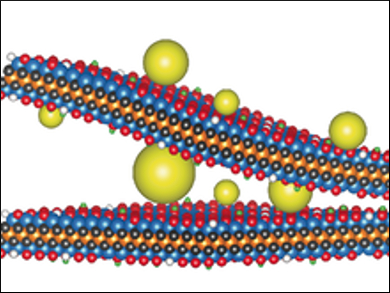The efficient operation of lithium-ion batteries depends on the electrochemical performance of their electrode materials. Molybdenum disulfide is a promising 2D electrode material. However, it suffers from intrinsically poor electrical conductivity and a large volume change upon cycling, which leads to slow charging and short lifetimes.
Ling Miao, Huazhong University of Science and Technology, Wuhan, China, Yury Gogotsi, Drexel University, Philadelphia, PA, USA, and colleagues have synthesized 2D heterostructures composed of molybdenum disulfide supported on molybdenum titanium carbide (MXene). The MXene surface was combined with elemental sulfur and converted into molybdenum disulfide under heat treatment. The resulting structures show metallic conductivity.
As anode materials for lithium-ion batteries, the prepared heterostructures show high specific capacity, fast charging rate, and enhanced cycling stability compared with pure molybdenum disulfide. Density functional theory (DFT) calculations show that the strong adsorption of lithium and cycling intermediates on the heterostructures contributes to their improved electrochemical performance. The researchers hope that this work will be useful for constructing 2D heterostructures for efficient and stable lithium-ion batteries, as well as electronic, optical, and other applications.
- MoS2-on-MXene Heterostructures as Highly Reversible Anode Materials for Lithium-Ion Batteries,
Chi Chen, Xiuqiang Xie, Babak Anasori, Asya Sarycheva, Taron Makaryan, Mengqiang Zhao, Patrick Urbankowski, Ling Miao, Jianjun Jiang, Yury Gogotsi,
Angew. Chem. Int. Ed. 2018.
https://doi.org/10.1002/anie.201710616



